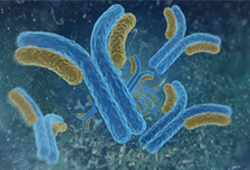 Last month, Robert Bahr, Deputy Commissioner for Patent Examination Policy at the USPTO issued a memorandum to the Patent Examining Corps addressing written description of antibody claims. Many patents covering biological products contain antibody claims.
Last month, Robert Bahr, Deputy Commissioner for Patent Examination Policy at the USPTO issued a memorandum to the Patent Examining Corps addressing written description of antibody claims. Many patents covering biological products contain antibody claims.
A major focus of the USPTO memorandum is the Federal Circuit’s decision in Amgen v. Sanofi. As we have reported previously, in Amgen, the District of Delaware held that Amgen’s patents with genus claims directed to monoclonal antibodies that inhibit PCSK9 (such as Amgen’s Repatha® and Sanofi/Regeneron’s Praluent® products) were valid, but the Federal Circuit reversed, deciding that it was improper to apply the “newly characterized antigen” test for compliance with § 112. The Federal Circuit recently denied Amgen’s petition for rehearing en banc. The USPTO memorandum to examiners summarizes the Amgen holding:
The Amgen court expressly stated that the so-called “newly characterized antigen” test, which had been based on an example in USPTO-issued training materials and was noted in dicta in several earlier Federal Circuit decisions, should not be used in determining whether there is adequate written description under 35 U.S.C. § 112(a) for a claim drawn to an antibody.
As a result of the Amgen decision, the memorandum advises examiners that:
In view of the Amgen decision, adequate written description of a newly characterized antigen alone should not be considered adequate written description of a claimed antibody to that newly characterized antigen, even when preparation of such an antibody is routine and conventional. The Amgen decision will be added to the MPEP in due course.
The memorandum also addresses resources that examiners can consult for guidance about § 112 as it relates to biotechnology patents in view of the Federal Circuit’s Amgen v. Sanofi decision. The memorandum states that the USPTO’s “Written Description Training Materials” dated March 25, 2006, which included examples applying the “newly characterized antigen” test, no longer reflect the current state of the law and should not be relied upon. New written description training materials are being prepared. The memorandum also lists several resources that USPTO personnel should continue to follow regarding written description, including MPEP 2161.01 and 2163 and several training modules and workshop materials from 2015-2016. However, the memo identifies specific passages from these materials that reflect the outdated “newly characterized antigen” test and states that those passages should not be followed.
